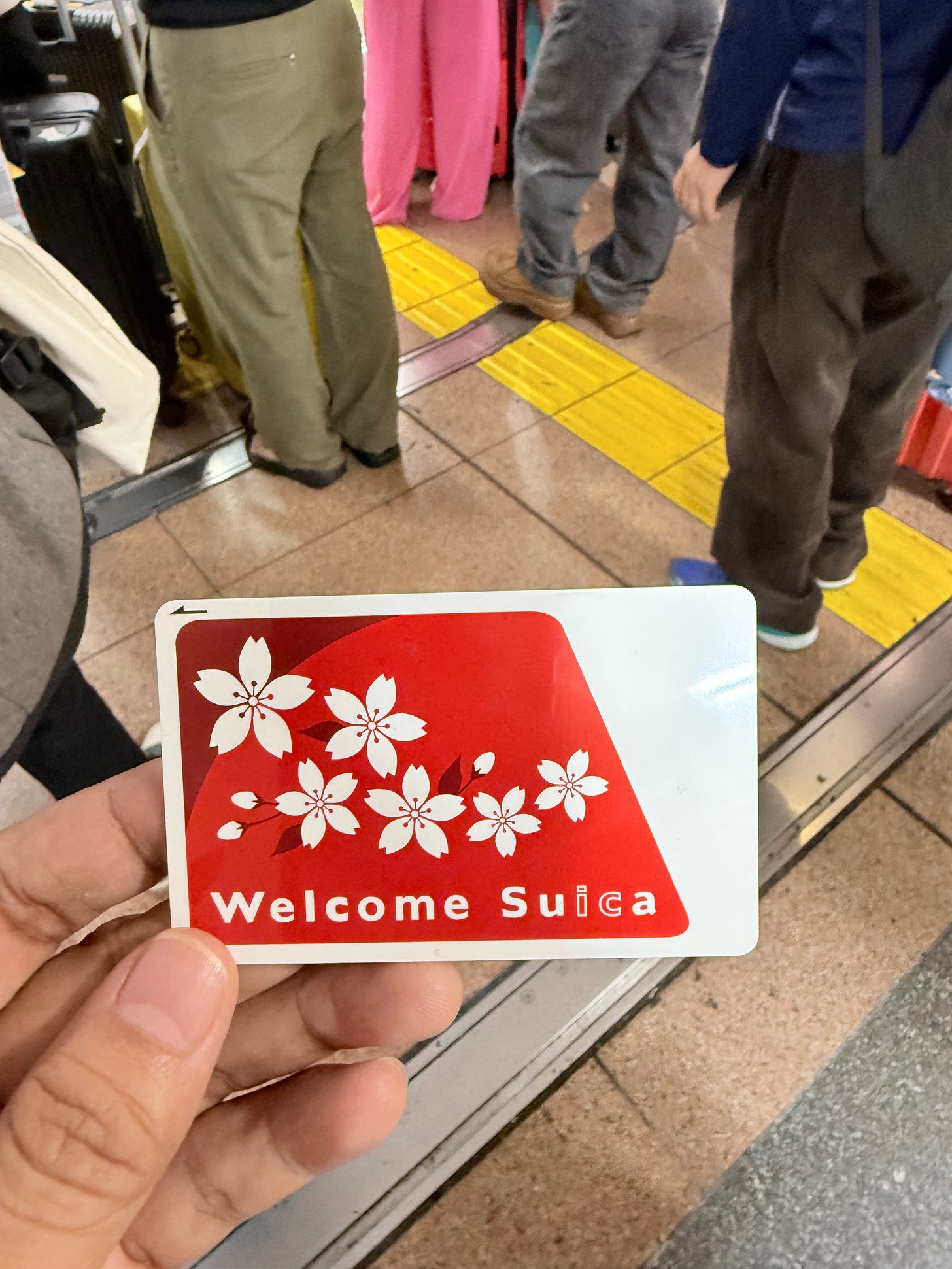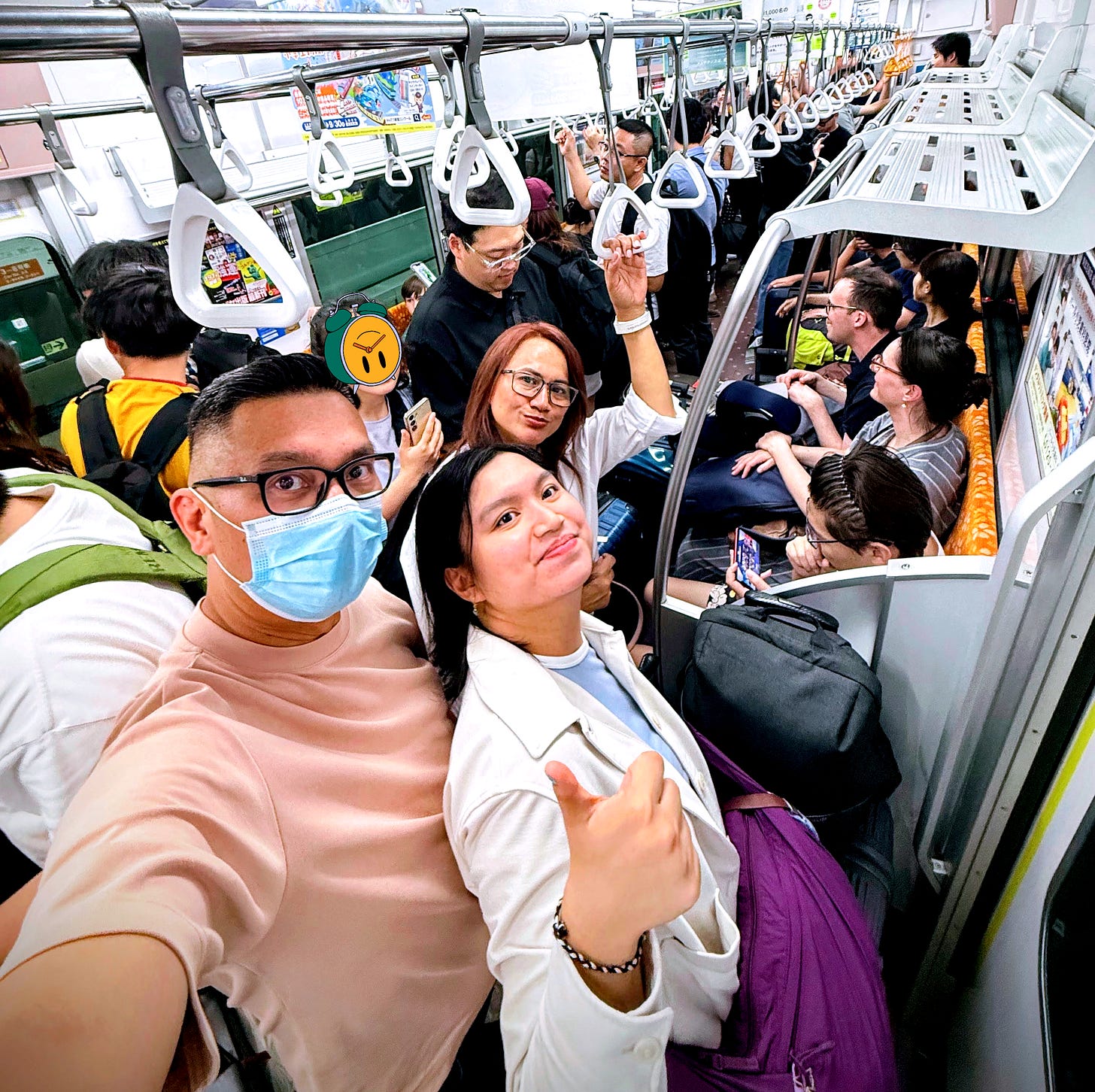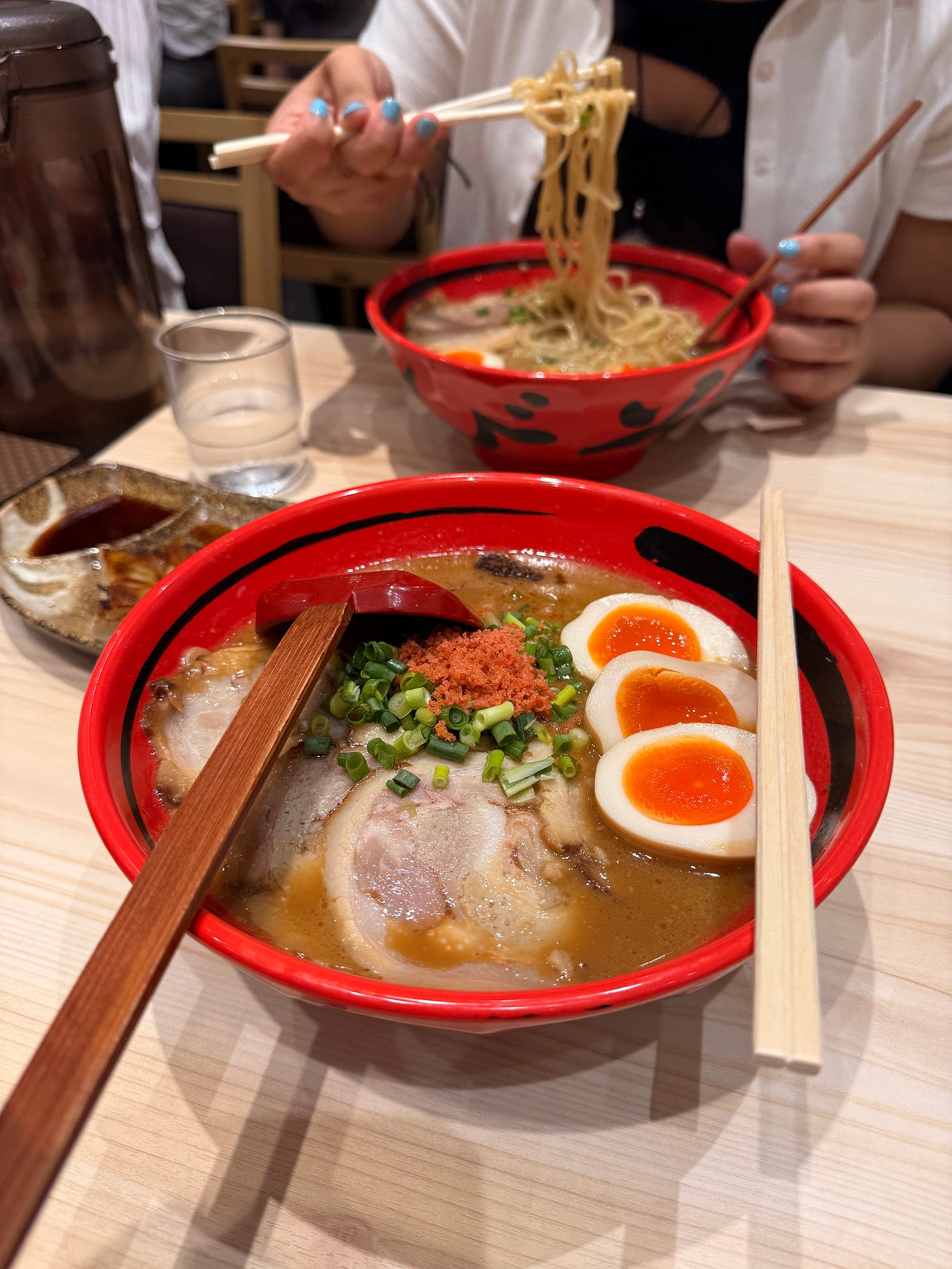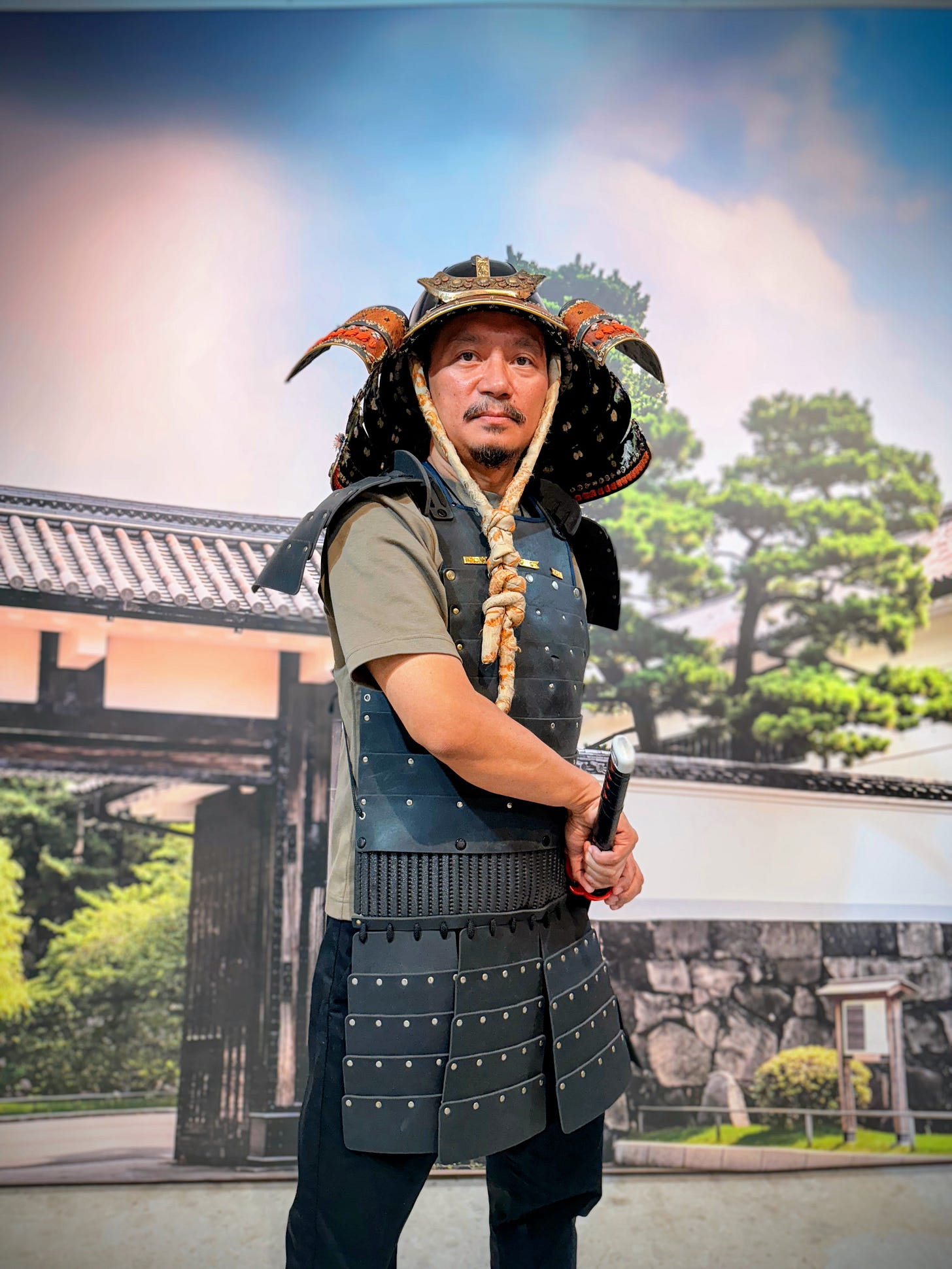Newsletter #26: Part 2: Back in Tokyo: A Seven-Day Sojourn
And our happy mistakes along the way.
Take off your shoes when trying on clothes in [name of store]. I was wearing one when I was fitting waterproof shorts. Oppsss. So goes my first broken “rule” in Japan. Taking off your shoes is good etiquette when visiting someone else’s home, a culturally traditional place like shrines and temples, and some restaurants. This practice extends to fitting rooms in clothing stores, I belatedly discovered.
Here’s another lesson: Always say "Sumimasen" when you approach someone — a stranger or a store clerk — before you start conversing. It’s rude not to say it first. It means, “Excuse me” or “I’m sorry.” It’s also a polite way of getting someone’s attention. I made the mistake of talking straight to a store clerk who was surprised by my “rudeness.”
I began learning the Japanese language two years ago through Duolingo. Years after being quizzed by this nifty app, I still struggle to utter a complete sentence. I’ve managed to pick up a few words. However, my youngest daughter surpasses me in learning from videos online — is this a sign of an older brain incapable of remembering and learning new things? Can’t teach an old dog new tricks, eh?
Silence is golden in Japan. Talking loudly in trains and on the streets is frowned upon. Cars don’t even honk. Inside trains, phones are on silent. You can hear a pin drop.
In trains, you also have to line up before boarding. You always let the people out first, before you board. When going up the escalators, stay on the left side to give way to people rushing. Stairs are aplenty in train stations. I even noticed calorie counts in each flight of stairs. Japan is conscious of your health. If you can, take the stairs, not the escalator.
In trains, there’s a place for the elderly, for people with disability, women, and parents with babies. I once made the mistake of sitting in an empty seat in that area. Opps, again.
Once you’ve managed to get out of the train station, and you’re walking the streets of Tokyo, mind your place on the sidewalks because people on bicycles will pass you by. Give way and stay on the left side. If you're dragging luggage, make sure it doesn’t cause any obstruction as you walk towards your destination. Pedestrians walk on the left side. It is logical to avoid blocking passageways for pedestrians in the streets of Japan. It is disrespectful.
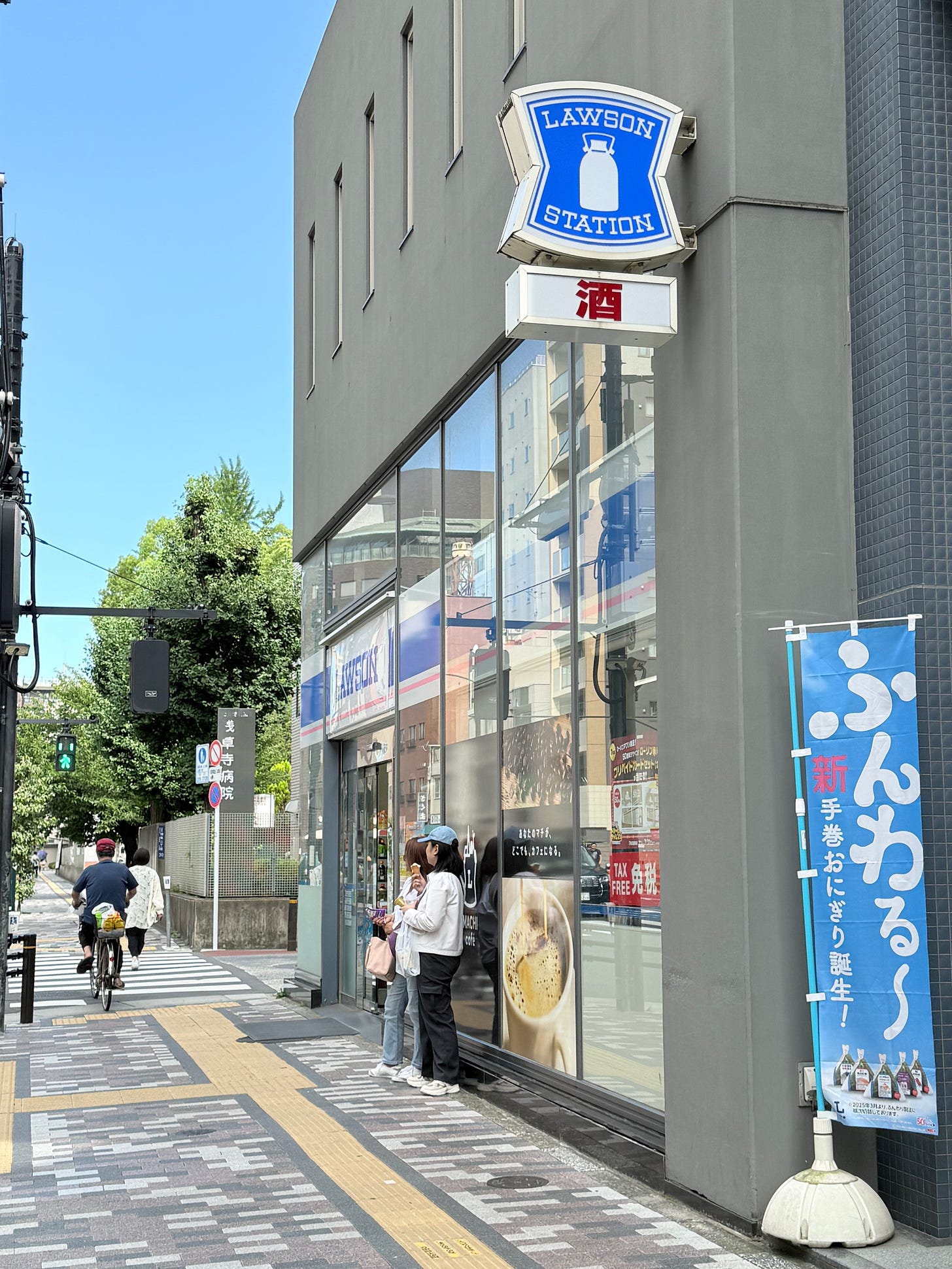
Japan is very clean. You rarely see trash or even garbage bins on the streets. If you’ve just eaten food from a konbini or bought water from a vending machine, you have to bring your trash and take it back to the hotel. Some vending machines provide disposal bins, but it’s best to keep your waste with you. Pro tip: Bring a plastic bag and use it for trash. Public trash bins are rare in Japan.
Here are other cultural etiquette that you should remember:
Be respectful at temples and shrines. Bow at the gate, purify your hands and mouth, be quiet, and if you can, pray.
Ask before taking photos, especially of people, inside temples, in shops, and in school premises (this I discovered when we wandered off to an elementary school when we went to Mt. Fuji).
Cash is still king. Many places still prefer cash over cards. (This is especially useful when buying street food in Tsukiji market or simply buying soft ice cream. However, you can also use your Suica card or, for us Filipinos, G-cash card. It works!)
Food etiquette
Say “Itadakimasu” before eating and “Gochisousama” after. It is a sign of gratitude.
Here’s a big no-no: Do not stick chopsticks upright in rice. This is only done during funerals. Don’t pass food chopstick-to-chopstick. Again, this is linked to funeral rituals.
It’s okay, however, to slurp on your noodles. It shows you’re enjoying the ramen.
There’s so much to see and experience in Japan. Tokyo, for example, offers a lot of attractions, shopping centers, cultural immersion, food, and more shopping. I was telling one of my friends that Japan has all hobbies covered. Liking vintage watches? We found one in Ueno that is called Mizutani Watches and Jewelries. It is a small and modest store, where you will find rare vintage watches from brands like Seiko, King Seiko, Grand Seiko, to name a few. If you’re lucky, you will meet the friendly and warm owner who is patient enough to show you his collection of old watches.
If you love vinyls, you can find newer ones in Tower Records in Shibuya or second-hand stores like Book Off. I also found cassette tapes being sold at Tower Records, including cassette tape players that can connect to a wireless earpiece via Bluetooth — another vintage technology. Since I didn’t have a vinyl player at home, I skipped the old vinyls. However, I saw some classic rock favorites and from the ‘90s grunge genre.
If you want designer bags, jeans, or anything that you fancy, they have it. We skipped that. We went hunting for Onitsuka Tigers and cheaper sneakers at the nearest ABC-Mart. This shop has all the brands, except for Onitsuka.
If you love anime, Akihabara is the place to be. My daughter went nuts after finding a second-hand shop for anime figures, books, and merch. She also found this multi-storied store called Animate. This store offers manga and anime. This anime store is usually pricier — I found that out too late — but it offers discounts on some items. You can also use your passport for tax-free payments.
Suppose you’re looking for musical instruments. Japan has it. We found a music store in Ginza, but only managed to buy pendants that featured a guitar pick, and we tried some gashapons too.
We discovered a Samurai Ninja Museum in Asakusa, Tokyo, which is a cultural attraction. Apart from some quick lessons in Japanese history, you will have a chance to dress like a Samurai and test your skills at throwing shuriken — I did and even won a competition on who can hit the most bullseye. After having fun dressing up as a Samurai, I bought a history book of Japan, but in manga form.
Since we stayed close to the Sensō-ji temple, we skipped the crowd and visited this cultural site in the evening. At night, you can marvel at the temple’s imposing structure, with its intricate designs and towering pagodas. My daughter wanted to learn her fortune. You do this by drawing an omikuji, a paper fortune slip. For a small fee — around 100 yen, you shake a metal box until a numbered stick falls out, then you find the matching numbered drawer to retrieve your omijuki. Fortune smiled on my daughter, and she took the omikuji back to the hotel.
If you want to see Tokyo differently, try looking from above — that is, from the Tokyo Tower or the Tokyo Skytree, both imposing man-made structures that offer panoramic views of Tokyo. The Tokyo Tower is a classic landmark that has two decks, a main deck at 150 meters, and a top deck at 250 meters. Meanwhile, the Tokyo Skytree is a 634-meter structure that is considered one of the tallest structures in Japan. Best to get a ticket to this place way ahead of time because tourists flock to witness breathtaking views from its Tembo Deck and Tembo Galleria.
Bye, Tokyo
As we boarded our flight back to Manila, the contrast of the city’s heat was a stark reminder of the incredible, vibrant adventure we had just experienced. Tokyo’s charm was undeniable, from its bustling streets to its quiet traditions. Every moment—from the ritualistic to the robotic—was a discovery that enriched our understanding of Japan’s unique blend of ancient culture and modern innovation — think TeamLab Borderless.
Reflecting on our journey, it was clear that Tokyo had left an indelible mark on our hearts. The city’s seamless fusion of tradition and modernity, its vibrant energy, and the warm hospitality of its people—including some Pinoys whom we’ve met along the way—made this trip an unforgettable experience. Whether it was the serene beauty of Mt. Fuji, the historical serenity of the Sensoji Temple, the magical escapism of Disney World, or the bustling excitement of Shibuya, Akihabara, Shinjuku, and Ginza, each day offered a new adventure that deepened our appreciation for Tokyo’s multifaceted charm — trains and 20,000 daily steps in all.
In the end, our Tokyo adventure was not just a vacation but a journey of discovery—one that took us through the heart of a city (including getting lost in the train station) that celebrates both its rich heritage and its forward-looking spirit. As we look back on our memories, we’re filled with gratitude for the experiences and the stories we now carry with us, forever etched in our minds as the vibrant, unforgettable essence of Tokyo.


